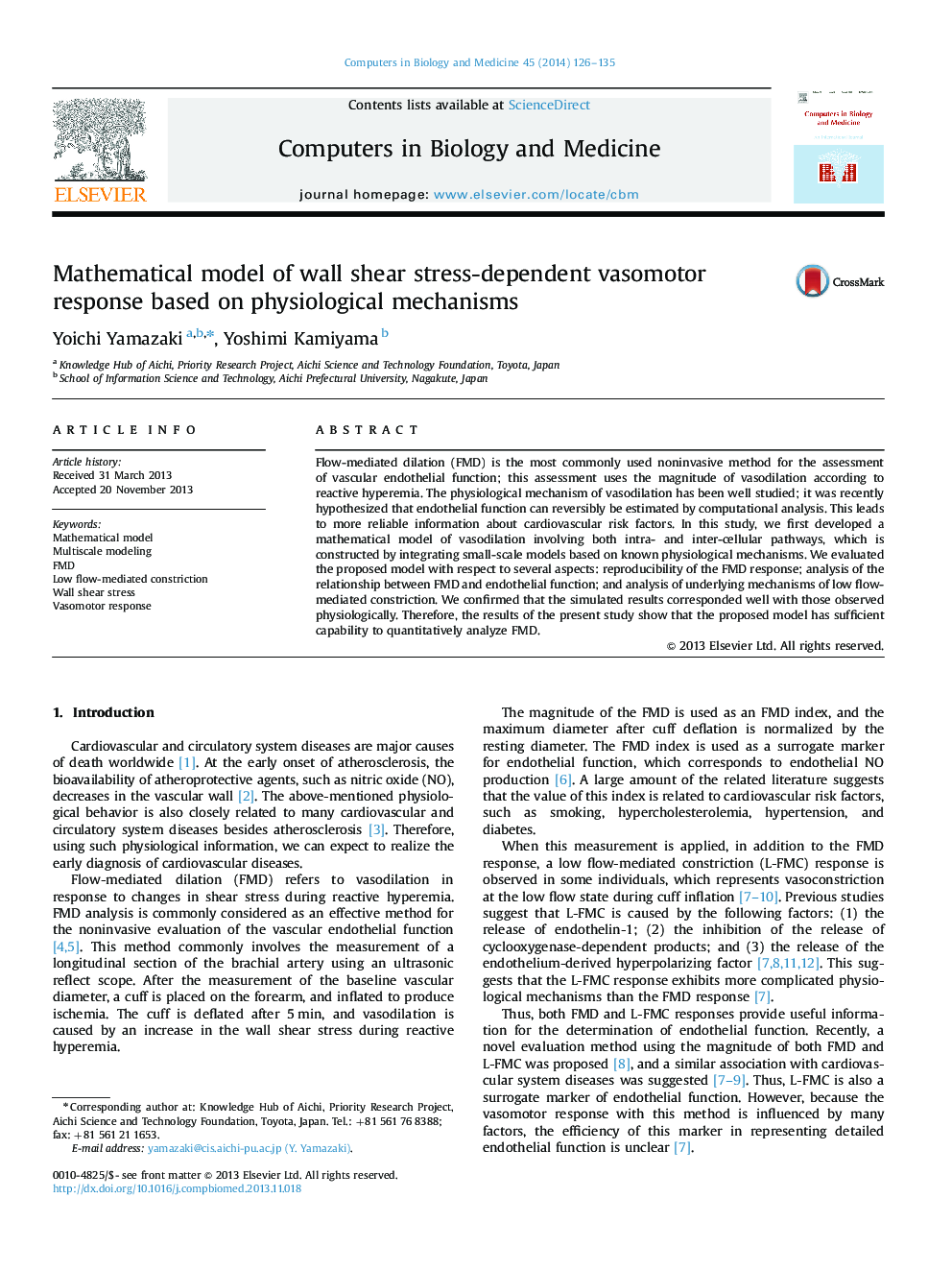| Article ID | Journal | Published Year | Pages | File Type |
|---|---|---|---|---|
| 505043 | Computers in Biology and Medicine | 2014 | 10 Pages |
Flow-mediated dilation (FMD) is the most commonly used noninvasive method for the assessment of vascular endothelial function; this assessment uses the magnitude of vasodilation according to reactive hyperemia. The physiological mechanism of vasodilation has been well studied; it was recently hypothesized that endothelial function can reversibly be estimated by computational analysis. This leads to more reliable information about cardiovascular risk factors. In this study, we first developed a mathematical model of vasodilation involving both intra- and inter-cellular pathways, which is constructed by integrating small-scale models based on known physiological mechanisms. We evaluated the proposed model with respect to several aspects: reproducibility of the FMD response; analysis of the relationship between FMD and endothelial function; and analysis of underlying mechanisms of low flow-mediated constriction. We confirmed that the simulated results corresponded well with those observed physiologically. Therefore, the results of the present study show that the proposed model has sufficient capability to quantitatively analyze FMD.
